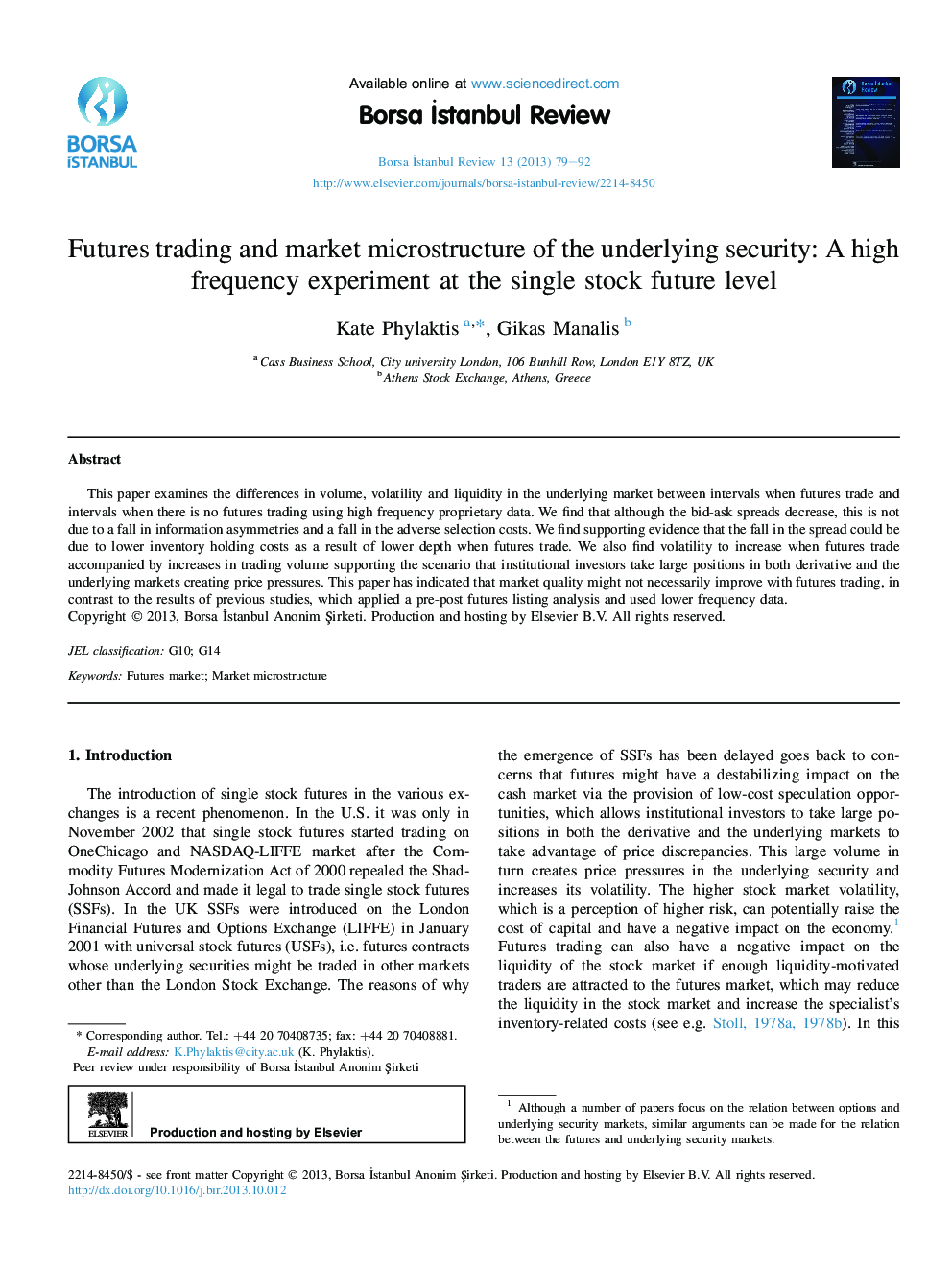| Article ID | Journal | Published Year | Pages | File Type |
|---|---|---|---|---|
| 7342215 | Borsa Istanbul Review | 2013 | 14 Pages |
Abstract
This paper examines the differences in volume, volatility and liquidity in the underlying market between intervals when futures trade and intervals when there is no futures trading using high frequency proprietary data. We find that although the bid-ask spreads decrease, this is not due to a fall in information asymmetries and a fall in the adverse selection costs. We find supporting evidence that the fall in the spread could be due to lower inventory holding costs as a result of lower depth when futures trade. We also find volatility to increase when futures trade accompanied by increases in trading volume supporting the scenario that institutional investors take large positions in both derivative and the underlying markets creating price pressures. This paper has indicated that market quality might not necessarily improve with futures trading, in contrast to the results of previous studies, which applied a pre-post futures listing analysis and used lower frequency data.
Related Topics
Social Sciences and Humanities
Economics, Econometrics and Finance
Economics and Econometrics
Authors
Kate Phylaktis, Gikas Manalis,
